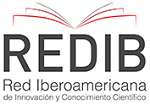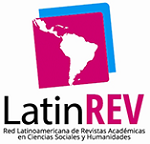Smart City, trends, and evolution: A bibliometric analysis
DOI:
https://doi.org/10.15649/2346030X.2478Keywords:
Bibliometric analysis, Social network analysis, Co-word analysis, Smart CityAbstract
A smart city places people at the centre of development and incorporates ICTs into urban management as a response to problems such as pollution, insecurity, and congestion. Developed countries focus on improving the quality of life of their inhabitants and work on making cities intelligent, inclusive, and sustainable spaces. In academia, the term "smart city" has been gaining interest, as shown by a review of Clarivate's WoS database, which shows 9 records for 2011 rising to 950 records in 2019. The search results showed a sample of 2833 documents in the period from 2001 - 2019. As an area of knowledge in development, it is relevant to know the trends that frame its evolution. The proposed analysis is based on the postulates of bibliometrics and scientometrics, which through the co-occurrence of data and the strength of links between components of a network, infers related bodies of knowledge in an objective manner, recognizing hot topics, declining themes, relevant publications, among others. The VOSviewer software was used as an information processing tool, which is a open source software that provides the construction and visualization of knowledge networks, which facilitates their exploration. In this study one can see that the knowledge area is focused on 3 themes: 1) Development of cities based on innovation and sustainability, 2) design and administration of cities by means of Internet and the Internet of Things as well as 3) frameworks based on bigdata aimed at governance. These results guide researchers interested in broadening the horizons of this theme and in seeking new paradigms related to the Smart city.
References
J. Linares y K. Vásquez. «Ciudades inteligentes: ¿materialización de la sostenibilidad o estrategia económica del modelo neoliberal?», El Ágora USB, Revista de Ciencias Sociales, vol. 18, n° 2, pp. 479-495, 208.
Deloitte, «Super Smart City - Happier Society with Higher Quality | Deloitte China | Public Sector», deloitte.com, 2018. https://www2.deloitte.com/cn/en/pages/public-sector/articles/super-smart-city.html# (accedido mar. 27, 2020).
R. A. López -Alvarado, «Ciudad Inteligente y Sostenible: hacia un modelo de innovación inclusiva», Paakat Rev. Tecnol. Soc., vol. 7, n.o 13, pp. 1-17, 2017.
G. M. Martinez-Toro, D. Rico-Bautista, E. Romero-Riano, C. J. Galeano-Barrera, C. D. Guerrero, y J. A. Parra-Valencia, «Analysis-of-the-intellectual-structure-and-evolution-of-research-in-human-computer-interaction-A-bibliometric-analysis», Rev. Iber. Sist. E Tecnol. Informaçao, vol. 17, pp. 363-378, ene. 2019.
Y. He, I. Stojmenovic, Y. Liu, y Y. Gu, «Smart City», Int. J. Distrib. Sens. Netw., vol. 10, n.o 5, p. 867593, may 2014, doi: 10.1155/2014/867593.
A. Meijer and M. P. R. Bolívar, «Governing the smart city: a review of the literature on smart urban governance», Int. Rev. Adm. Sci., vol. 82, n.o 2, pp. 392-408, jun. 2016, doi: 10.1177/0020852314564308.
A. Mattoni, F. Gugliermetti, and F. Bisegna, «A multilevel method to assess and design the renovation and integration of Smart Cities», Sustain. Cities Soc., vol. 15, pp. 105-119, 2015.
R. Szabó et al., «Framework for smart city applications based on participatory sensing», en 2013 IEEE 4th International Conference on Cognitive Infocommunications (CogInfoCom), 2013, pp. 295-300.
Y. Atif and S. Mathew, «A social web of things approach to a smart campus model», en 2013 IEEE International Conference on Green Computing and Communications and IEEE Internet of Things and IEEE Cyber, Physical and Social Computing, 2013, pp. 349-354.
G. M. Martinez-Toro, G. C. Ariza-Zabala, D. R. Bautista, and E. Romero-Riaño, «Human computer interaction in transport, a systematic literature review», en Journal of Physics: Conference Series, 2019, vol. 1409, n.o 1, p. 012002.
A. J. Meijer, J. R. Gil-Garcia, and M. P. R. Bolívar, «Smart City Research: Contextual Conditions, Governance Models, and Public Value Assessment», Soc. Sci. Comput. Rev., vol. 34, n.o 6, pp. 647-656, dic. 2016, doi: 10.1177/0894439315618890.
N. J. van Eck, L. Waltman, R. Dekker, and J. van den Berg, «A comparison of two techniques for bibliometric mapping: Multidimensional scaling and VOS», J. Am. Soc. Inf. Sci. Technol., vol. 61, n.o 12, pp. 2405-2416, dic. 2010, doi: 10.1002/asi.21421.
E. Garfield, «From bibliographic coupling to co-citation analysis via algorithmic historio-bibliography: A citationist’s tribute to Belver C. Griffith, Lazerow Lecture presented at Drexel University, Philadelphia, PA. November 27, 2001», PA Retrieved March, vol. 5, p. 2015, 2001.
N. J. van Eck y L. Waltman, «VOSviewer Manual». Centre for Science and Technology Studies CWTS, ene. 27, 2020, [En línea]. Disponible en: https://www.vosviewer.com/documentation/Manual_VOSviewer_1.6.14.pdf.
B. Vargas-Quesada y F. de Moya-Anegón, Visualizing the structure of science. Springer Science & Business Media, 2007.
N. J. van Eck y L. Waltman, «Text mining and visualization using VOSviewer», p. 5.
G. M. Martinez-Toro, G. C. A. Zabala, y A. R. Piedrahita, «El rol de los modelos en el aprendizaje organizacional y el diseño de políticas», Rev. Ibérica Sist. E Tecnol. Informação, n.o E28, pp. 386-398, 2020.
Published
How to Cite
Issue
Section
Altmetrics
Downloads
License
The journal offers open access under a Creative Commons Attibution License

This work is under license Creative Commons Attribution (CC BY 4.0).












